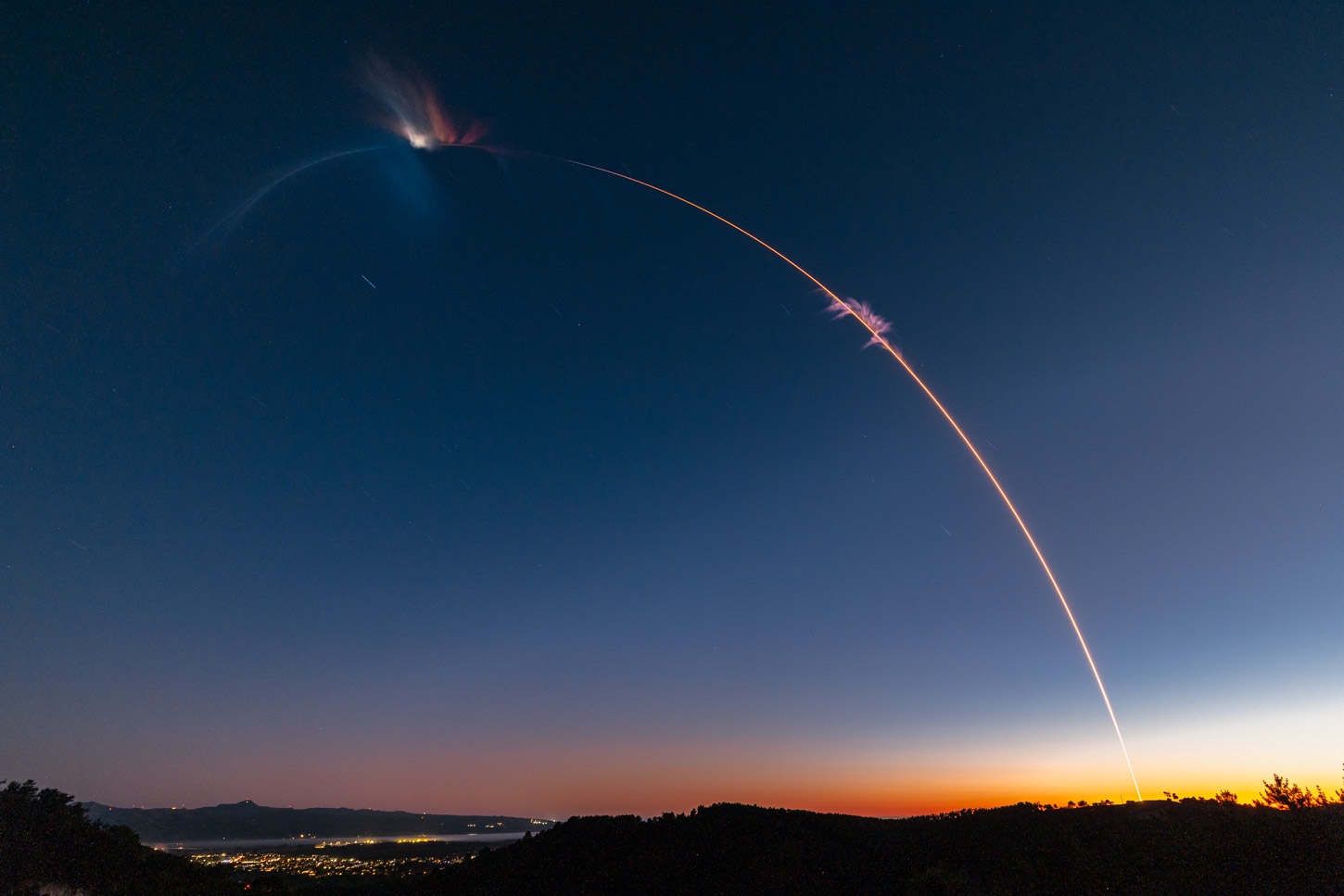Products You May Like
Updated 8:25 p.m. Eastern with post-launch statement.
TOKYO — Firefly Aerospace placed eight cubesats into orbit on a mission funded by NASA on the first flight of the company’s Alpha rocket since an upper stage malfunction more than half a year ago.
The Alpha rocket lifted off from a foggy Vandenberg Space Force Base in California at 12:04 a.m. Eastern July 4. A launch attempt July 2 was scrubbed after a ground equipment issue halted the countdown just before ignition of the rocket’s first stage engines.
The rocket started deploying its payload of eight cubesats about 35 minutes after the upper stage shut down, a process expected to last about 11 minutes according to a timeline provided by Firefly. The orbit was a low Earth orbit, but Firefly did not disclose the specific target orbit for the mission before the launch.
“After expected deployment, @NASA’s CubeSat teams are now awaiting acquisition of signal,” the company posted on social media three hours after liftoff, but neither NASA nor the payload owners commented on the status of their cubesats in the first several hours after launch. The launch webcast confirmed the deployment of seven of the eight cubesats.
The mission, called Educational Launch of Nanosatellites (ELaNa 43) by NASA, carried four satellites developed by universities: CatSat from the University of Arizona, KUbeSat-1 from the University of Kansas, MESAT-1 from the University of Maine and SOC-I from the University of Washington. NASA’s Johnson Space Center provided the R5-S4 and R5-S2-2.0 satellites while the Ames Research Center built the TechEdSat-11 cubesat. The eighth cubesat, Serenity, came from a nonprofit group, Teachers In Space.
NASA awarded Firefly a contract for the launch through its Venture Class Launch Services (VCLS) Demo 2 program to support new small launch vehicles. Firefly won the VCLS Demo 2 contract in 2020 along with Astra Space and Relativity Space. Astra’s VCLS launch, in February 2022, failed to reach orbit when the upper stage of its Rocket 3.3 malfunctioned. Relativity planned to use its Terran 1 rocket for its VCLS mission, but the company announced in April 2023 it was retiring the vehicle after a single launch that failed to reach orbit so that it could focus on its larger Terran R vehicle.
The launch was the fifth of the Alpha overall, and the first since a December 2023 launch that stranded its payload, a Lockheed Martin technology demonstration satellite, into a low orbit when the upper stage malfunctioned on a second burn. The company later blamed the incident on a software problem. On this mission, Firefly said it completed a second stage relight and “nominal plane change” following deployment of the cubesats.
“The Firefly team knocked it out of the park,” Bill Weber, chief executive of Firefly Aerospace, said in a statement after the launch.
Firefly has not announced a date for the next Firefly launch but said before this launch that it planned to perform as many as four Alpha launches this year and up to six in 2025. The customer for the next launch is projected to be Lockheed Martin, which announced June 5 a contract with Firefly for at least 15 and as many as 25 Alpha launches through 2029.
Firefly confirmed in its post-launch statement that Lockheed will launch a “dedicated commercial mission” on the next Alpha, followed by a responsive space demonstration mission for the National Reconnaissance Office later in the year on another Alpha, using Firefly’s Elytra tug.
